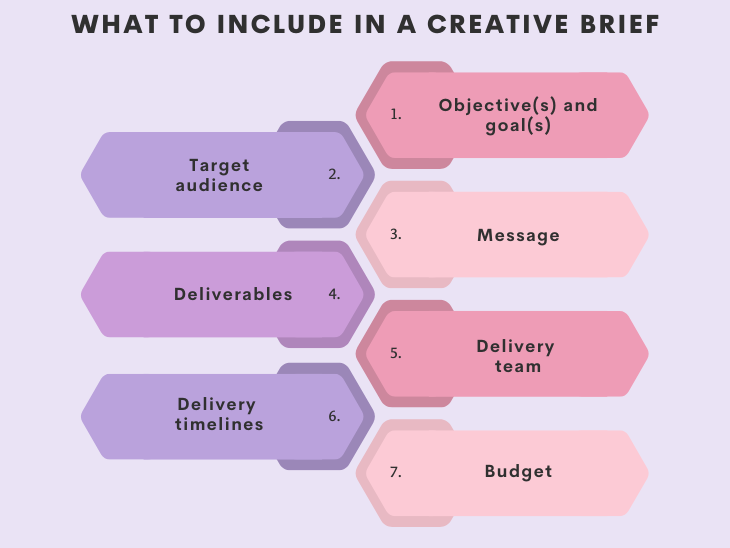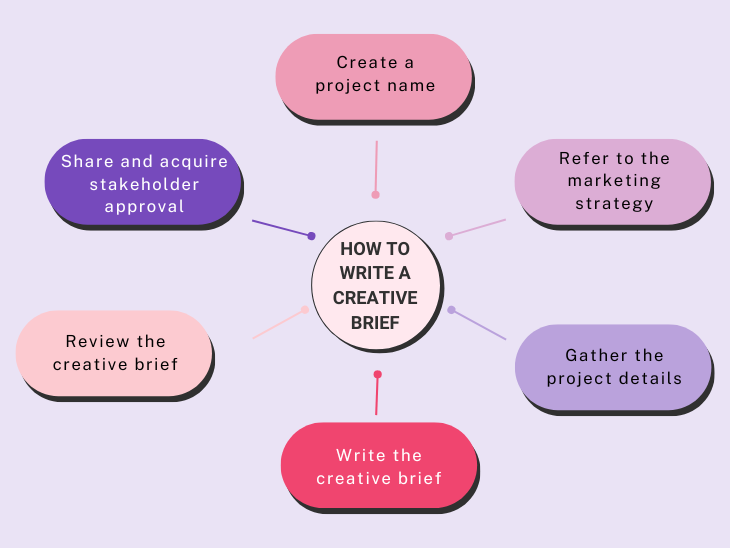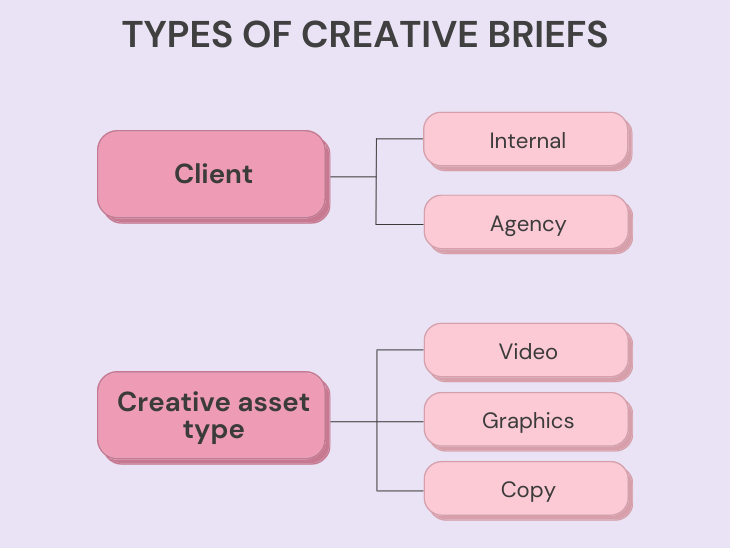
If you have been involved in brand management, marketing, or working with a creative agency, there is a good chance you have experienced the complexity of launching a successful campaign.
Many activities are to be carefully orchestrated, but they can easily spiral into an endless and frustrating campaign delivery when it is not well-managed.
The result? Shmi Skywalker’s quote, from The Phantom Menace, explains it well:
“You can’t stop change any more than you can stop the suns from setting” — Shmi Skywalker
It doesn’t have to be that way. In this article, I will define what a creative brief is, how great ones are created, what they include, and provide you with templates to get going.
Are you ready?
“Set a course for the creative brief, Warp six. Engage!”
OK, sorry, that is a Star Trek reference. I pinky promise it will not happen again.
“Once you start down the dark path, forever will it dominate your destiny,” Yoda once said in The Empire Strikes Back. For this exact same reason, it is essential to only embark on the journey of delivering a creative project when the creative brief has been established.
A creative brief is a document that sets out the strategy, approach, path, and deliverables to achieve the success of a creative project.
Let’s have a look at its purpose.
The formulation of a creative brief is an inter-team collaborative effort between the project manager, designer, and stakeholders who are contributing to the success or can influence its outcomes. Only together can you rule the delivery of a creative project.
For that reason, I am sure Darth Vader, in The Empire Strikes Back, is a great advocate of using creative briefs to achieve delivery success:
“Together we can rule the galaxy” — Darth Vader
Before jumping into what’s included in a creative brief, I want to point out two things.
First:
If it is the first time you write a creative brief my advice would be to be like Ahsoka Tano in The Mandalorian, who said “I like first, good or bad, they’re always memorable.”
In the context of the creative brief, it means that it is important to get started on the creation and retrospect. Learn from what worked well and where to improve. From the get-go, involve multiple people, both for creation and review. It helps in creating a sense of urgency, ownership, and belonging.
Keep in mind there is one person accountable for the end result. As the saying goes: too many Siths spoil the broth.
Second:
Analyze the competitors. Understand what they are doing and how they are tackling similar opportunities. What’s more, it allows you to acquire knowledge of their past successes and failures in similar projects.
These insights help you to accelerate creative ideas and try new approaches.
There are many aspects that make a creative brief. They are:
 Now let’s dive into what each aspect means. May the force be with you.
Now let’s dive into what each aspect means. May the force be with you.
As with all good things, start with the why. Describe the purpose of the initiative, its goals, and expected outcomes.
Make sure that your goals follow the template of a SMART goal:
Avoid sounding like Yoda in The Empire Strikes Back when he said, “difficult to see; always in motion is the future.”
For a creative project aiming to increase website traffic, an example of a good SMART goal could look something like this:
We want to increase our website traffic by 14 percent in the next quarter by publishing 10–12 articles per week. We believe this is achievable as traffic increased by 9 percent each and every month in the last quarter when posting 6–8 articles. By increasing blog traffic, we’ll improve our brand awareness and generate new leads.
Describe who the initiative is targeting. This means that you need a description of the target audience and their characteristics.
Some questions you may ask to get started are:
Personas and empathy mapping are two great tools to use.
Capture the tone of voice and brand guidelines to adhere to and what is to be included in the messaging. Address the message to be conveyed to the target audience and the emotion it should evoke.
Some description of items that should be included are:
There are many other descriptors that can be used to convey the message, but these are good starting points.
Define the scope. Outline the milestones and deliverables of the initiative.
A milestone is a specific significant event in the delivery of an important stage. For instance, the publishing of an ad.
A deliverable is something that is provided as part of the initiative, such as a newsletter, promotional video, or poster.
You can also set out what is not included in the delivery. For instance, if the client will provide all creative assets, it is out of the scope of your delivery.
Describe who is needed to deliver the initiative successfully and which effort is expected to be required from them.
In addition, you can consider capturing who the major stakeholders are and how to communicate with them to ensure they don’t switch to the dark side. Identifying stakeholders makes it easier to acquire resources and deliver as a cohesive team wile keeping all parties informed.
It is nice when, at the completion of the initiative after all is delivered and objectives are met, you can quote Leia Organa, from The Force Awakens:
“You know, no matter how much we fought, I’ve always hated watching you leave” — Leia Organa
Delivery shouldn’t last till eternity. The details gathered on milestones and deliverables and the capacity needed to deliver them empower you to define the timelines.
Describe when the initiative starts and when it will be completed. Also, consider being more granular by adding delivery timelines for milestones and deliverables.
There might be a chance that the completion deadline is a given from which you need to plan backward. Keep this in mind when planning roles and costs.
It doesn’t come for free now, does it? Line out the expenses and, if needed, when they are expected to be incurred.
Include both the costs of those delivering the results as well as costs associated with any materials needed. For instance, printing and publishing costs.
There are many steps in the formation of creative brief. When they are done correctly, you will be successful writing and formulating your creative brief. These components include:

Write down a concise title for the product brief that captures the essence and is understandable to decision-makers and stakeholders. Don’t be like the Star Wars franchise that named their movies incorrectly.
Link back to the marketing strategy and ensure that the creative brief supports them. In addition to doing so, stakeholders will find it easier to understand and rally behind the objectives.
Consult those who are required to get the content included in the creative brief. Going through this exercise will also provide you with a good overview of the stakeholder landscape to be managed.
Now that you have all of your information gathered, you can finally jot it all down. Thus, your creative brief is born.
Two people know more than one. A review helps to make the creative brief better.
People tend to overlook their own writing mistakes. Letting others, with fresh eyes, review the brief strengthens it in all aspects by correcting grammar errors and finding holes in the logic and information. (Note: Big shoutout to the editor of this article who captured all my flaws and mistakes, and gracefully improved them :D)
On top of that, when inviting others to review, you create shared ownership and buy-in.
When the brief is in good shape, it is time to share it with stakeholders and acquire their approval.
I personally like what I call the “sure shot” model here. The “sure shot” model is where approval is a 100 percent guarantee. How can you achieve this? By bringing stakeholders on board early, understanding their needs, and validating the buy-in upfront.
Keep in mind that not only do you need their initial approval, but also their ongoing support. Early involvement is the key to success from my experience. As Tobias Beckett would say, in Solo: A Star Wars Story, “You told Chewie people are predictable. You’re no exception.”
Creative briefs come in multiple forms for various purposes. Let’s have a look at some of the common ones.
For your convenience, and to get you started on your journey, a template is available for each:

This one is mainly used when working with marketing agencies. It allows you to provide a compelling offering that fits their brand.
Agency creative brief template
This creative brief is to envision a creative approach for a marketing campaign. For example, an advertisement, or a new email campaign.
Campaign creative brief template
The one helps product teams to understand what is needed for video projects. It helps them resonate with and evoke emotions from the target audience.
This brief, like the video creative brief, focuses on the graphics. The difference is that this one looks at static graphics, such as logos, images, and posters. It provides the designer with context to what is to be included and to be adhered to.
Graphic design creative brief template
Where the video creative brief is focused on a specific video, and a graphic design brief on static designs, the copy creative brief focuses on a — you guessed it — specific piece of copy content. Think about e-books, whitepapers, or blog articles.
Copy content creative brief template
If you heard about the legends of creative briefs before — like Lando Calrissian in Solo: A Star Wars Story — by now you will agree that, “Everything you’ve heard about them is true.”
A creative brief is essential to understanding what is needed to deliver a creative project. A great one includes several sections that set you up for successful delivery. Creative briefs come in various forms based on their purpose.
Let’s end this one with an Obi-Wan Kenobi quote that shows how he feels about creative briefs:
“This is the weapon of a Jedi Knight … an elegant weapon for a more civilized age” — Obi-Wan Kenobi
Featured image source: IconScout

LogRocket identifies friction points in the user experience so you can make informed decisions about product and design changes that must happen to hit your goals.
With LogRocket, you can understand the scope of the issues affecting your product and prioritize the changes that need to be made. LogRocket simplifies workflows by allowing Engineering, Product, UX, and Design teams to work from the same data as you, eliminating any confusion about what needs to be done.
Get your teams on the same page — try LogRocket today.

Most teams fail at autonomy. Learn how clear rules help product teams move faster without micromanagement.

A practical framework for PMs to use AI in ideation without sacrificing judgment, strategy, or decision quality.

A practical five minute revenue estimation method to help product managers compare ideas, drop low impact features, and prioritize smarter.

A practical guide for PMs who want to stop being bottlenecks, delegate smarter, and lead teams effectively with a clear ownership framework.